|
“The judgment of people”
The siege was still in progress, when the Communist
Party and the police started the process of organizing and carrying out
mass arrests and lynchings. Due to the encouragement of the Communist
Party, these public executions became mass celebrations, and they continued
for several years following the end of the war. Such popular verdicts
were necessary in order to appease those most wronged by the war.
As a result of the crimes of the Hungarian politicians and military leaders,
thousands had perished, become homeless, lost family members and
their fortunes. However, these punishments only served a political
purpose and the 'legal' procedure lacked the minimal judicial requirements.
|
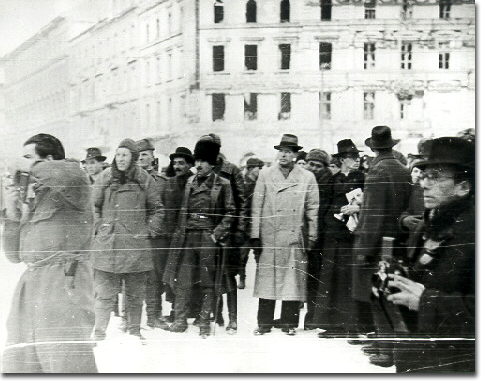 |
Spectators at the execution of
Arrow Cross men Rotyis and Szivós. In the center in the beige overcoat
is the lay judge Ákos Major.
Source: Magyar Nemzeti Muzeum
|
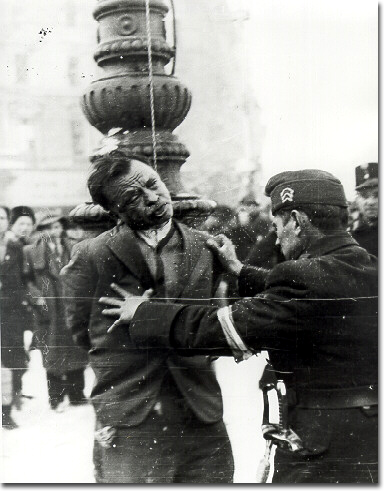 |
The execution of Sándor Szivós
at Oktogon, February 4, 1945.
Source: Hungarian National Museum
|
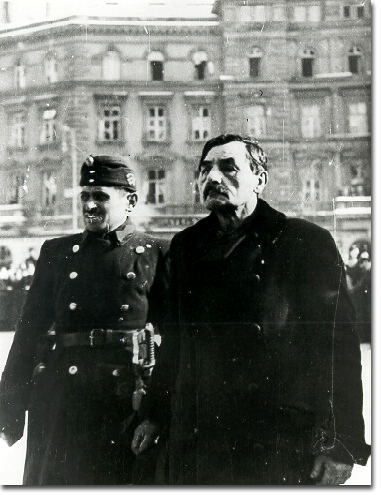 |
The execution of Rotyis at Oktogon,
February 4, 1945.
Source: Hungarian National Museum
|
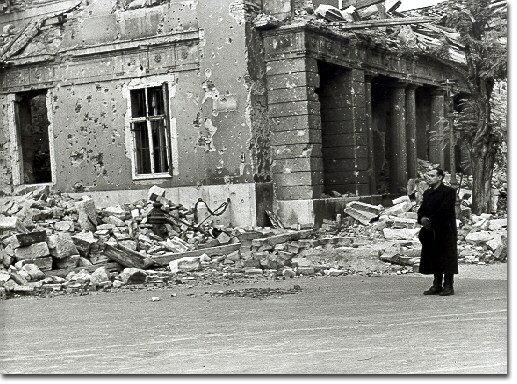 |
|
Ferenc Szálasi on Szent György
square in front of the Sándor Palace (the old residency of the Prime Minister).
|
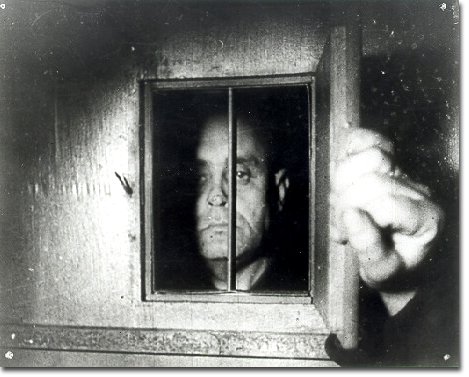 |
The new tenant of 60. Andrássy
avenue. Ferenc Szálasi in a prison cell.
Source: Hungarian National Museum
|
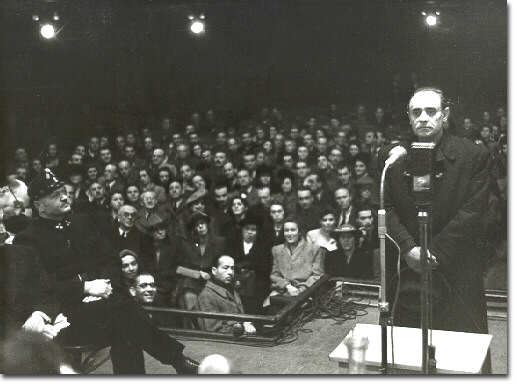 |
Szalasi before the People’s Court
at the Music Academy.
SourceL: MTI
|
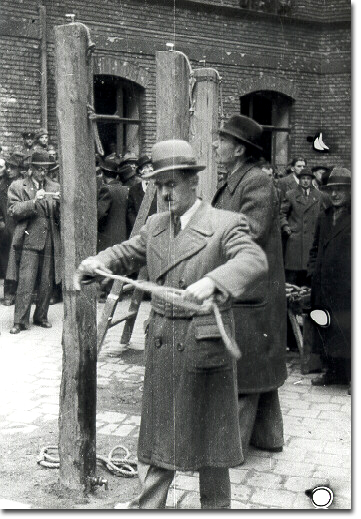 |
Bogar, the executioner and his
attendant at the hanging of Ferenc Szálasi and his accomplices, 1946. Photo:
Sándor Bojár
Source: Hungarian National Museum
|
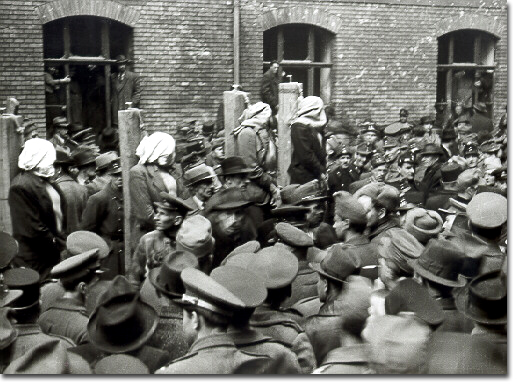 |
|
March 12, 1946. The courtyard
of the judiciary at Markó street: after the coroner pronounced them dead,
the bodies of the Arrow Cross leaders were put on public display.
From left to right: Ferenc Szálasi; Gábor Vajna, Minister of Domestic Affairs;
Károly Beregfy, Defense Minister; and József Gera, key figure in the Arrow
Cross Party.
|
|